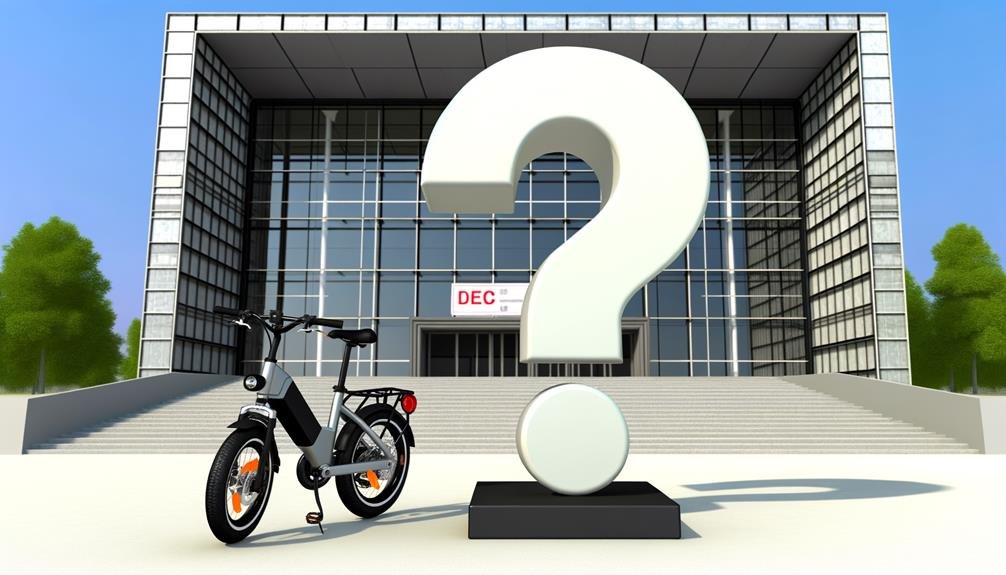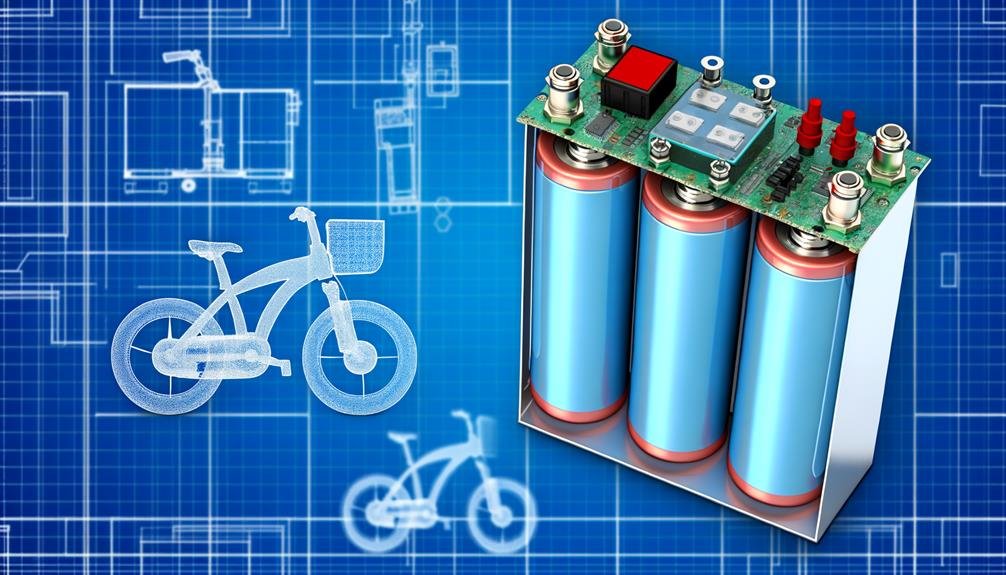Charles Miller is a veteran bike enthusiast with over 12 years of experience dealing with bikes as a mechanic. Despite immense love and expertise for...
In our experiences, we've seen that a 500W eBike can handle a variety of conditions, from city streets to light off-roading.
However, is 500W always enough, or are there conditions where more power might be beneficial?
The answer isn't as straightforward as you might think. It largely depends on individual needs, riding conditions, and specific bike models.
So, let's unpack this question together and explore how much power you really need for your eBike experience.
Key Takeaways
- Regulatory compliance limits ebikes to a 500W output and a maximum speed of 20mph in Canada, ensuring safe and legal use.
- A 500W ebike motor offers power efficiency, longer battery life, increased range, and terrain adaptability.
- Higher wattage motors increase the risk of injury, impact bike stability, and may not be necessary for general commuting needs.
- The suitability of a 500W motor for ebike use depends on personal experience, but it generally delivers ample power, versatility, and speed for a variety of riding conditions.
Understanding Ebike Power Requirements
To fully comprehend the power requirements of an ebike, we must consider factors such as regulatory compliance, battery efficiency, motor reliability, safety considerations, and the impact of terrain on performance. Understanding ebike power requirements is key to making an informed choice about whether a 500W motor is enough for an ebike.
Compliance with regulations is paramount. Canadian provinces, for example, limit ebikes to a 500W output and a maximum speed of 20mph on motor power alone. This ensures safety and keeps our ebikes street legal.
Battery efficiency is another critical factor. Smaller motors, like a 500W, allow for lighter, cost-effective batteries that extend range and battery life for general commuting needs.
Motor reliability should never be overlooked. Motors exceeding 1000W are often prone to overheating and failure, whereas lower wattage motors offer proven reliability and efficiency across diverse riding conditions.
Safety considerations further reinforce our understanding. Higher wattage motors can increase the risk of injury and impact the bike's stability, especially for novice riders.
Pros of a 500W Ebike
Let's kick off our discussion on the advantages of a 500W ebike.
In terms of power efficiency and terrain adaptability, this specification offers a multitude of benefits. We'll explore how its power output impacts speed, range, hill-climbing ability, and adaptability to different riding conditions.
Power Efficiency
When considering the power efficiency of ebikes, 500W models offer notable advantages, including compliance with many regional regulations, lighter and more cost-effective battery setups, and a safe, manageable riding experience ideal for everyday commuting.
We find these watt electric bike models to be particularly reliable, with a lower risk of motor failure or overheating during long rides. If you're questioning, 'Is 500w enough for ebike use?', remember that these models also provide the necessary power and performance for uphill rides and challenging terrains.
You can count on their power efficiency for longer battery life and increased range. This balance of power and efficiency makes the 500W ebike a smart choice for the savvy commuter, promoting both environmental consciousness and practicality.
Terrain Adaptability
Navigating different terrains with a 500W ebike, you'll find enhanced climbing ability that effortlessly conquers steep hills and challenging terrains. This terrain adaptability is a key pro of a 500W ebike, providing versatility and improved acceleration for quick starts on various surfaces.
The motor size offers extended range for longer rides without frequent recharging, especially helpful when tackling hilly terrains. This adaptable motor power isn't only suitable for diverse terrains but also ensures efficient handling of different riding conditions.
You'll appreciate the increased speed and power that makes for faster commutes. So, in the debate of 'is 500W enough for an ebike?', considering terrain adaptability, our answer is a resounding yes.
Cons of a 500W Ebike

While 500W ebikes offer many advantages, they also have their drawbacks.
The limitations in speed capabilities can be frustrating for riders who need to travel faster or cover longer distances.
In addition, concerns about battery life and performance issues in challenging terrains are also factors worth considering when choosing a 500W ebike.
Limited Speed Capabilities
Despite their proven reliability and efficiency, 500W motors do have certain limitations, particularly when it comes to speed capabilities. The fact is, while 500W e-bikes are designed for safe and efficient use on city roads, their limited speed capabilities may not meet the needs of all riders.
Lower wattage motors, such as 500W, are carefully engineered and extensively tested for reliability, but they can't match the speed potential of motors exceeding 1000W. However, higher wattage motors can increase safety risks, making control more challenging for less experienced riders.
Hence, choosing a 500W ebike requires considering your personal preferences and intentions, acknowledging the trade-off between speed, safety, and cost-effectiveness.
Battery Life Concerns
Moving from speed limitations to battery life, it's worth noting that a 500W motor may tax the battery more heavily, particularly when traversing hilly terrains, thus influencing the overall range and lifespan of the e-bike's power source.
This brings up the battery life concerns, where the question arises – is 500W enough for an ebike? Here are some points to consider:
- A bigger battery may be required to sustain the power need of a 500W motor.
- Riding in hilly areas can drain the battery faster.
- Heavier riders may experience reduced range.
- Consistent uphill rides could necessitate a more powerful motor.
Terrain Performance Issues
A considerable number of ebike enthusiasts have reported performance issues when tackling challenging terrains with a 500W ebike, particularly when it comes to steep inclines and carrying heavy loads. You'll notice these terrain performance issues most when you're dealing with a lot of hills or rough off-road conditions.
Consider the comparison below:
| Terrain/Load | 500W Ebike Performance |
|---|---|
| Steep inclines | May struggle, slower speed |
| Heavy loads | Reduced efficiency, struggle uphill |
| Rough terrains | Limited power output, less traction |
| Lots of hills | Shorter battery range, less torque |
Comparing 500W Ebike With Higher Power Models

When we delve into the comparison between a 500W ebike and models with higher power, it's crucial to note that even motors with lower wattage can achieve formidable power outputs with the right battery setup. This fact alone proves the point that 500W is indeed enough for an ebike.
Comparing 500W ebike with higher power models, we find several advantages. These include:
- Compliance with regulations: Most cities mandate a maximum power output for ebikes. A 500W motor generally falls within these regulations, ensuring safe and efficient use on city roads.
- Weight reduction: A smaller motor allows the use of a lighter battery, decreasing the ebike's overall weight and enhancing maneuverability.
- Lower risk of overheating: Higher power models, especially those exceeding 1000W, are more prone to overheating, particularly during extended uphill rides.
- Rider preference: The choice of motor power ultimately depends on the rider's intentions and personal preferences.
Terrain Impact on Ebike's Power Needs
While it's clear that a 500W ebike can handle most urban environments, the type of terrain significantly impacts an ebike's power needs, especially when dealing with uphill rides or more challenging landscapes. Steeper hills may require more from your ebike, potentially making the question of 'is 500W enough for an ebike?' a bit more complex. More challenging terrains demand higher motor watts, meaning ebikes with lower wattage motors may struggle, forcing riders to exert more effort.
The terrain impact on ebike's power needs can't be ignored. On flat, smooth surfaces, 500W might be more than sufficient. But when we're tackling hilly terrains or off-road paths, a higher wattage motor may be necessary to provide the necessary power and assistance. We need to match motor power with the terrain we'll be encountering to ensure a smooth and efficient riding experience.
Choosing a motor with appropriate wattage based on the terrain can significantly optimize an ebike's performance and battery efficiency. We want everyone in our ebike community to enjoy the ride, no matter the landscape. So, when selecting your ebike, consider your terrain and choose your motor watts accordingly.
Energy Efficiency and Battery Life

Just as the terrain plays a crucial role in determining the right motor wattage, so does energy efficiency and battery life, which are critical factors in optimizing an ebike's performance. We need to understand that a 500W motor, while providing sufficient power for general commuting needs, also affords better energy efficiency. This, in turn, contributes to longer battery life and increased range.
When we consider if 500W is enough for an ebike, we must also weigh in factors like:
- Rider weight: A heavier rider might need more power.
- Terrain: Hilly terrain requires more wattage than flat roads.
- Bike weight: Heavier ebikes need more power to move.
- Mileage range: Longer rides need more battery life.
In this light, we see that smaller motors not only allow for lighter, more cost-effective batteries, but they also prevent the risk of overheating, providing a safer ride experience.
As a community that values safety, efficiency, and practicality, we believe in the suitability of a 500W motor for general commuting needs.
Personal Experience: Riding a 500W Ebike
In our hands-on experience with a 500W ebike, we found that it delivers ample power for everyday commuting, particularly on flat surfaces. The question, 'is 500w enough for ebike?' had often been asked. Our experience affirms that it is, in fact, enough.
Upon testing the 500W ebike on different terrains, we discovered that it also performs impressively on uphill rides. The motor provides significant assistance, ensuring that riders don't strain too much. This is a testament to the bike's versatility, underscoring its suitability for a variety of riding conditions.
We also noticed an enhanced rate of acceleration, making it perfect for quick starts and maneuverability in traffic. This feature significantly contributes to the overall riding experience, making it more enjoyable and efficient.
One of the highlights of our 'personal experience: riding a 500W ebike' was the ability to reach speeds of up to 20 miles per hour. This speed range facilitates faster commutes, making it ideal for riders who've longer distances to cover.
Therefore, based on our encounter with the 500W ebike, we confidently affirm that 500W is enough. It offers sufficient power, versatility, and speed for a satisfactory riding experience.
Frequently Asked Questions
Is There a Big Difference Between 500W and 750W Ebike?
Yes, there's a noticeable difference. A 750W ebike typically offers better acceleration, greater torque, and less strain on the battery. However, it'll likely drain the battery quicker than a 500W motor.
How Fast Will a 500W Ebike Go?
Discussing 'how fast will a 500W ebike go?', it's vital to consider motor efficiency, battery life, and pedal assistance. We'll find that a 500W ebike can reach speeds up to 20 mph.
Is 500W Ebike Enough for Hills?
We're confident that a 500W ebike is enough for hills. Proper hill climbing techniques and battery efficiency can mitigate terrain impact. It's not just about wattage, but also how you use it.
What Is a Good Wattage for Ebike?
We believe a good wattage for an ebike depends on usage. For general commuting, 250W's efficient. However, for challenging terrains, 500W's ideal, balancing wattage efficiency, battery life, and motor durability. It's about finding your fit.
Conclusion
So, is 500W enough for an e-bike?
Well, ironically, it's both yes and no.
For the light riders and the flat-terrain cruisers, it's a resounding yes.
But for the heavy-duty riders tackling steep hills, it's a probable no.
It's all about that delicate balance between power, battery life, and your specific needs.
So, you see, the power of your e-bike isn't just about the watts—it's about how you use them!

Charles Miller is a veteran bike enthusiast with over 12 years of experience dealing with bikes as a mechanic. Despite immense love and expertise for his Tacoma, he rides his Trek Ebike more. Anytime you meet him, you’ll either hear him talking about Bikes, or writing about all things bikes and cars on this blog.
More Posts


